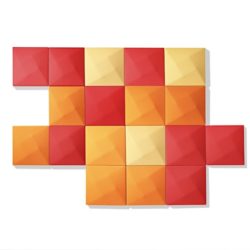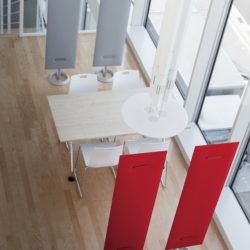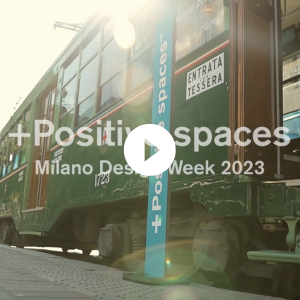We are very careful with choosing what “comes out” of our mouth. However, we should also be more selective about what “goes in” our ears. For any doubd the free App JL Audio, a real time sound analyzer, is a useful help.
The term “acoustics” has been synonymous with sound amplification for a few millennia. Due to the spreading of a “culture of silence”, particularly rooted in North Europe and America, the traditional meaning expanded to the concept of acoustic comfort and protection against noise.
In public places, the need to protect oneself against too much noise is very real: and also to define acoustically protected environments.
The classic types proposed by Altman (primary, secondary and public spaces) lose validity, since there are no more clean-cut boundaries and our living/working environments include these three levels of territoriality at the same time. At work, the approach to the acoustics theme has grown complex, since the new Ways Of Working and need for space optimization leads to replace enclosed private offices with open-plan offices balanced by lounge and in-between areas, moving noise and distraction-creating activities away from desks. This topic is also included in the 2013 US Workplace Survey by Gensler Architects that talks about distraction and decline of performances caused by lack of boundaries.
The layout of common rooms has often favored physical partitions and visual perception, to define functional areas, but a design should also handle intangible and immaterial elements, like sound waves.
Edward T.Hall, creator of proxemics, clearly explained to what extent sound affects space perception and how sound interferences – from outside too- inhibit comprehension and learning. Hall points out that from the point of view of sound perception and acoustic comfort, those devices acting on the “personal bubble” are very important. However this bubble isn’t just designed to exclude other people, but also to include them, to establish a relationship, a sharing.
The following photogallery shows some furniture units and devices, which are useful to this purpose.
Text by Renata Sias,editor WOW! Webmagazine.
Captions:
1 Sound Art installation by the Japanese artist Jio Shimizu in the occasion of Sound Reasons, in Nuova Delhi from 6th to 12th November 2013, at Queens Gallery, British Council.
2 Dieffebi Primo Acoustic, design by 967 Architetti Associati, Storage system with soundproof doors that incorporate soundabsorbing materials.
3 Kinnarps, Oktav, squared acoustic wall panels.
4 Sedus, Mooia, a ground-breaking concept that combines sound-absorbing effects with decorative image and creative freedom (ceiling and wall versions available too).
5 Caimi Brevetti, Snowsound, patented technology panels allowing a selective sound absorption of the different frequencies (in the photo Snowsound in the Mitesco System, design by Michele De Lucchi).
6 Plantronics, Acoustic Intelligence and tecnologies: the modern headset is fast becoming the communication tool of choice for business users in “secondary” work environments.
7 Sagsa, Sound of Silence Collection, a complete system of sound absorbing office furniture, no fire, made by 100% recyclable steel.
8 Kvadrat, patented Soft Cells; whether used on ceilings or walls, the panels offer a high degree of control over acoustic conditions.


















